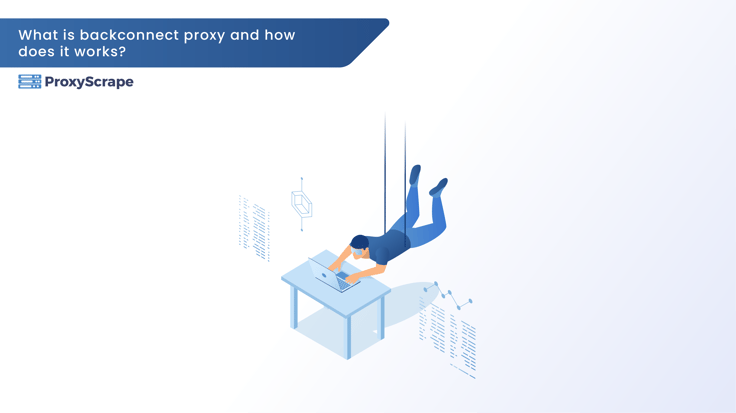
By now, you should know about web scraping and its legal issues. For a quick recap, web scraping is the process of extracting a large amount of data from a targeted source. Most websites say the data they display are public data, which means there are no actual liabilities in extracting them. But, some websites do not work in such a manner. These websites take countermeasures to avoid being scraped. When you start scraping for a long period of time, the countermeasures of the website’s server kick in and detect your IP address. Once your IP is detected, it will definitely block it, so that you cannot continue web scraping. In such situations, proxy, especially backconnect proxy helps a lot.
In the upcoming section, we will see what a backconnect proxy is and how it works.
A backconnect proxy is simply a proxy server that contains a pool of rotating proxies. Once every connection request is made, it will automatically shuffle the proxies in the pool. This shuffle proxy is made available to users to mask their IP addresses to perform web scraping. Since all the proxies are rotating proxies and can deeply mask your IP address, it is difficult for the target website’s server to detect your internet activity. In our case, web scraping.
Usually, websites block your activity by doing either of the following methods:
As mentioned, if you perform web scraping for long periods, you are vulnerable to getting blocked by the targeted website. To overcome this hurdle, a backconnect proxy is the best option.
Imagine the scenario in which you are required to scrap large data from a certain target. You need to send multiple requests to get the data, if not then your process will be very slow and inefficient. But sending multiple requests at a time will leave you vulnerable to getting blocked by the target website. Time is running out and your organization has invested a considerable amount of money and resources into this project.
To overcome those situations, your first step should be to mask your IP address, so that your target does not block you. The second step is to extract a large amount of data ethically in a short period of time. You have to be smart here, since you have already used more resources on this project. You should find a solution to satisfy both disadvantages. A backconnect proxy is the best solution. It helps to deeply mask your IP address because of the rotating proxy pool, and all the proxies have a high speed, which helps to efficiently extract data.
As mentioned, a backconnect proxy server uses the same proxy server pool. The residential proxies represent regular IP addresses, meaning that residential proxies represent the IP addresses provided by the ISP (Internet Service Provider). Residential proxies have all the same characteristics as the IP addresses provided by your ISP. In those situations, the targeted website will have a hard time detecting those IPs.
Backconnect proxies follow the same protocols as the normal proxies:
The loop will continue as long as the number of proxies are available in the pool. Once you get the data you can store it in any format. But usually, once the data is scraped it is stored in a database format, such as CSV or Excel spreadsheet.
Pros of using a backconnect proxy server:
1. Saves time.
2. Deeply masks your IP address.
3. Eliminates the limit request.
Cons:
1. Increases your budget.
2. Sometimes it is possible to get a stutter in the internet speed.
In simple terms, a sticky proxy is a proxy that uses the same IP address for a fixed period of time. Once the time is over, a new proxy will take its place.
The main difference between a sticky proxy and a rotating proxy is, in the sticky proxy, you have a fixed session consisting of 10 or 20 seconds, once the session is over. the client can get a new IP address. Whereas rotating proxies connect the client to the network whenever a connection is established. There are no time constraints with rotating proxies.